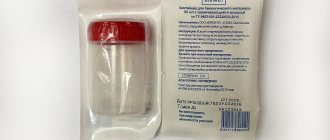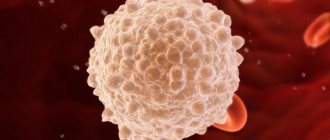Indications for the purpose of the study
A general clinical blood test is the most prescribed laboratory test for the quantitative and qualitative assessment of the main classes of blood cells.
The study includes determination of the concentration of the main blood elements (erythrocytes, leukocytes, platelets), hemoglobin level, hematocrit value, as well as calculation of erythrocyte indices (MCV, RDW, MCH, MCHC).
Erythrocytes (red blood cells) usually make up about 40% of blood volume. Their main function is to transport oxygen from the lungs throughout the body. The lifespan of an erythrocyte is on average 120 days. Thus, the bone marrow must continually produce new red blood cells to replace those that age and disintegrate or are lost through bleeding. Changes in the number of red blood cells are usually accompanied by changes in other indicators: hematocrit and hemoglobin level.
Hematocrit is the ratio of the volume of red blood cells to the volume of all components called whole blood; in practice, it is the proportion that all formed elements (quantitatively, mainly red blood cells) make up of the total blood volume.
Hemoglobin is an iron-containing protein found in all red blood cells that gives the cells their characteristic red color. Hemoglobin allows red blood cells to bind to oxygen in the lungs and carry it to tissues and organs throughout the body.
Most often, a low hemoglobin level is combined with a low red blood cell count and low hematocrit and indicates anemia.
Why is a general blood test done?
General blood diagnostics helps to detect inflammatory processes in the body, even if no symptoms appear.
Blood parameters that are determined during a clinical study:
- Red blood cell count.
- Hematocrit (the ratio of blood plasma volume to the number of red blood cells).
- Number of basophils.
- ESR (erythrocyte sedimentation rate).
- Platelet count.
- Color index.
- Hemoglobin level.
- Leukocyte count.
Using these indicators, the doctor can put together an overall picture of the patient’s condition. A blood test will help identify the cause of intoxication in the body, as well as possible malignant processes.
Main causes of anemia:
- Bleeding - acute (in case of injuries) or chronic (for example, in diseases of the gastrointestinal tract, organs of the urogenital tract).
- Nutritional deficiencies (iron, folic acid, or vitamin B12 deficiency).
- Damage to the bone marrow, such as from toxins, radiation or chemotherapy, or associated with severe infections.
- Bone marrow diseases (aplastic anemia, myelodysplastic syndrome), cancer (leukemia, lymphoma, multiple myeloma) or other types of diseases that spread to the bone marrow.
- Severe and chronic kidney disease, which leads to decreased production of erythropoietin (a hormone that stimulates the production of red blood cells in the bone marrow).
- Chronic inflammatory diseases.
- Decreased hemoglobin production (eg thalassemia).
- Excessive destruction of red blood cells, such as hemolytic anemia caused by autoimmune diseases or defects in the red blood cells themselves (hemoglobinopathy, red blood cell membrane abnormalities (eg, hereditary spherocytosis)).
Erythrocyte indices are calculated indicators that provide the doctor with information about the physical characteristics of red blood cells and are an important laboratory tool for diagnosing anemia and monitoring the effectiveness of therapy.
Platelets are shaped, non-nucleated blood cells that participate in the formation of thrombi (blood clots). Platelets are capable of “sticking” (aggregating) with each other and adhesion (“sticking” to the damaged vascular wall), which allows them to form a temporary clot and stop bleeding in small vessels.
If there are not enough platelets or platelet function is impaired, a stable clot may not form and there is a risk of excessive bleeding. Platelets "live" in the bloodstream for 8 to 10 days, so the bone marrow must continually produce new platelets to replace those that age, become depleted, and/or are consumed by bleeding. Determining the number of platelets in your blood can help diagnose a number of diseases associated with too few or too many platelets.
Leukocytes (white blood cells) are the main cells of the immune system and the basis of the body's antimicrobial defense. They protect against infections and also play an important role in inflammation and allergic reactions.
In addition to infections and inflammation, there are a number of conditions that can affect the production of white blood cells in the bone marrow or the survival of white blood cells in the blood, such as cancer or an immune disease, which results in either an increase or decrease in the number of white blood cells in the blood. The white blood cell count, along with other components of a complete blood count, alerts the practitioner to possible health problems in the patient.
There are five types of leukocytes, each of which performs its own function: depending on the presence of specific granules in the cytoplasm of the cells, a subgroup of granular leukocytes (neutrophils, basophils, eosinophils) and non-granular leukocytes (lymphocytes and monocytes) are distinguished.
A high white blood cell count, called leukocytosis, can result from a number of conditions and diseases. Here are some examples:
- infections, most often caused by bacteria and some viruses, less often by fungi or parasites;
- inflammation or inflammatory conditions such as rheumatoid arthritis, vasculitis or inflammatory bowel disease;
- leukemia, myeloproliferative neoplasms;
- conditions leading to tissue death (necrosis), for example, trauma, burns, surgery or heart attack;
- allergic reactions.
A low white blood cell count (leukopenia) can result from conditions such as:
- bone marrow damage (eg, toxins, after chemotherapy, radiation therapy);
- bone marrow diseases, where the bone marrow does not produce enough white blood cells (eg, myelodysplastic syndrome, vitamin B12 or folic acid deficiency);
- lymphoma or other cancer that has spread (metastasized) to the bone marrow;
- autoimmune disorders - the body attacks and destroys its own white blood cells (for example, lupus);
- dietary deficiency (eg, vitamin B12 deficiency);
- suppressive infections (eg, sepsis);
- diseases of the immune system, such as HIV, that destroy T lymphocytes.
When white blood cell counts are used to monitor medical conditions, a series of white blood cell counts that continue to rise or fall to abnormal levels indicates that the condition or disease is worsening. A white blood cell count that returns to normal indicates improvement and/or successful treatment.
What does a general blood test show?
The doctor compares the results of a clinical blood test with the standards. Deviations from the norm make it possible to determine the nature of the pathology.
Normal indicators:
- Red blood cells - approximately 3.8-5.5 x 10¹²/l for children and women, for men about 4.3-6.2 x 10¹²/l.
- Hematocrit - for men in the range of 39-49%, for women approximately 35-45%.
- Hemoglobin (structured protein) – within 120-140 g/l.
- Platelets (blood plates) – about 180 – 320 × 109/l.
- Leukocytes – should not exceed 4.0 – 9.0 × 109/l.
- Lymphocytes – 3.0 × 109/l.
- ESR – for women no more than 15 mm/h, for men up to 10 mm/h.
Red blood cells help transport oxygen to tissues. If there is not enough of them in the blood, anemia develops, and if there is an excess, cardiac pathology or chronic lung anomalies can be diagnosed. An increase in red blood cells is also recorded during overheating and during physical exertion.
An insufficient amount of hemoglobin in the blood can be observed in patients with a lack of iron in the body. Elevated protein levels indicate the development of blood diseases. A lack of platelets is often diagnosed in patients with hemophilia. With anemia, liver pathologies and thyroid diseases, an increase in the level of blood platelets is observed.
An increase in the number of white blood cells signals that the body is infected with bacteria, viruses or fungi. There are quite a few diseases in which this indicator increases, but they can also progress in completely healthy people, for example, in pregnant women or in women before menstruation. A decrease in the level of white blood cells can be diagnosed during viral hepatitis, measles, malaria and other infections.
A general blood test helps the doctor find the direction in which to look for the cause of the ailment; relying only on the results of this study alone, it may be impossible to make an accurate diagnosis. Therefore, if there are deviations from the norm, additional diagnostic procedures may be prescribed.
To take a general blood test, contact a medical office in Vidnoye and Moscow (near the Kolomenskaya metro station and the VDNKh metro station)
Preparation for the procedure
Donate blood for analysis on an empty stomach; at least 8 hours must have passed since the last meal. On the eve of the study, it is necessary to eliminate stress (physical and emotional), sudden changes in temperature (bath, sauna), intake of excessively fatty, sweet, spicy foods, and maintain a normal drinking regimen. A blood test is taken before physiotherapeutic procedures and, in agreement with the attending physician, before starting to take certain medications.
In emergency situations, the above rules are offset by the vital need for research, which in such cases is carried out without preparation.
Express tests
How long does it take to test a blood for hepatitis, syphilis, HIV?
A rapid test for diagnosing hepatitis is a high-quality and quick test at home to determine antibodies to this virus. Blood is taken from a finger, and the test result will be ready in just fifteen minutes.
A rapid test for diagnosing syphilis can also be performed at home, but this test detects Treponema pallidum bacteria. They indicate that a person has syphilis. Blood is also taken capillary, from a finger, the result will be ready in ten to fifteen minutes.
An HIV test is a blood test for the presence of the human immunodeficiency virus. At home, the results will be ready in just a few minutes. Blood is taken from a finger. It must be said that rapid testing can be used not only at home. They are also used by medical laboratories, and in terms of time (the period of blood testing using these systems), the tests do not differ from those carried out at home.
Among other things, there are many types of rapid testing, that is, blood tests at home, for example, to diagnose embryonal cancer antigen, rubella and cancer markers. The patient can only find out how many tests are performed using express systems in the instructions.
How long a blood test for biochemistry is done is of interest to many.
In the clinic
If we are talking about how many blood tests are done in a clinic, everything will be determined by what equipment it has. If it is modern, it will take the laboratory assistant no more than an hour to decipher the information.
When using outdated devices to process information in a clinic, it will take at least three hours to get a result. However, despite the fact that the result of the analysis can be obtained very quickly if desired, in most medical institutions this study is officially done within 24 hours.
As a rule, private laboratories provide results faster.
We looked at how many days a blood test is done.










